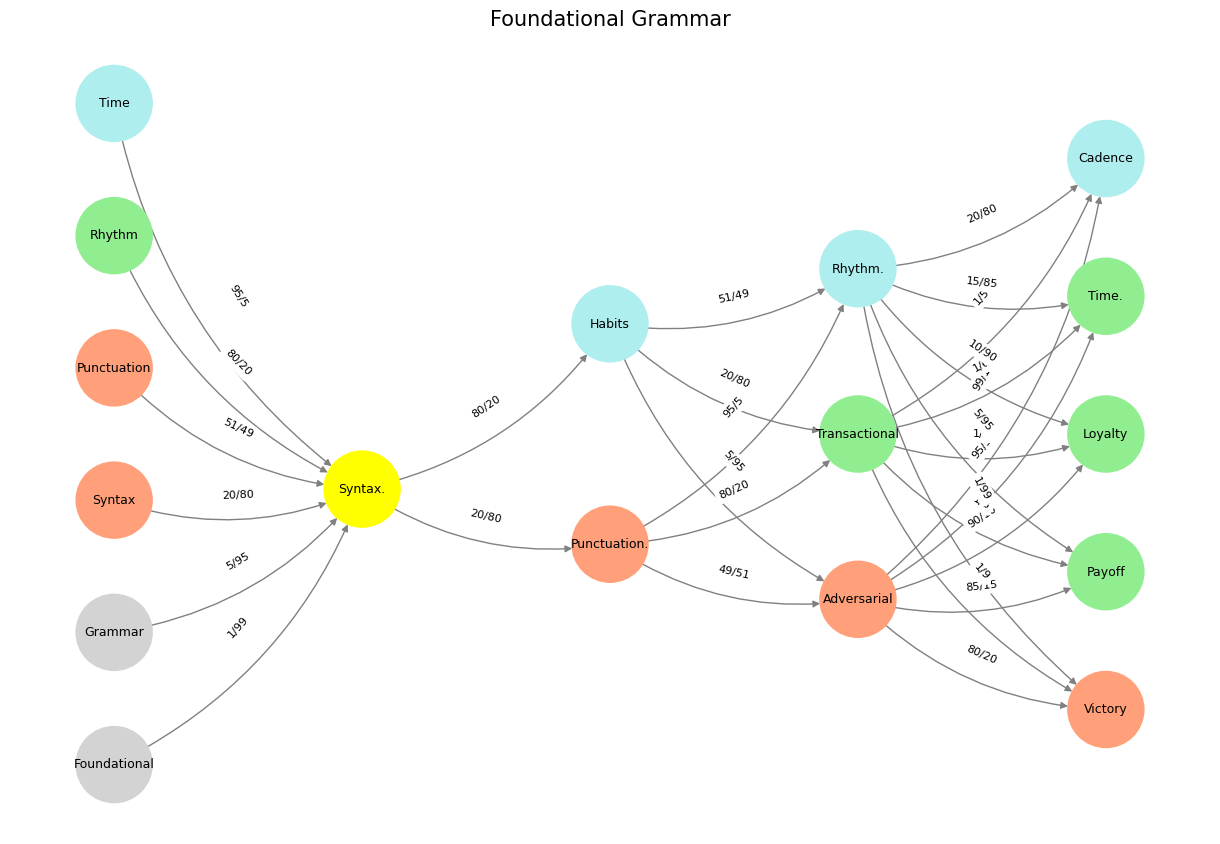Prometheus#
A child is born into a cosmos of improbability, a world where mere existence is a rebellion against the statistical void. From the moment of birth, the child’s temperament is already shaped by planetary forces—genetic inheritances, parental legacies, and the immutable laws encoded in the fabric of history. Yet this inheritance is not a script but a wager, an offering placed at the altar of time. To be alive is to receive this endowment, a timestamp upon a vast coordinate plane where the axes are resource and resourcefulness, heritage and adaptation. The newborn does not yet know the language of loss, but in time, it will learn that every moment of life is borrowed against an inevitable sacrifice.

Fig. 11 Our protagonist’s odyssey unfolds across landscapes of five flats, six flats, and three sharps. With remarkable delight and sure-footedness, the journey explores the full range of extensions and alterations of basic triads and seventh chords across all seven modes.#
To exist is to bear witness. The child grows, not as a passive recipient of history, but as a node within a vast and ancient network. The legacy of the parents, woven from the sinews of faith and failure, is not merely received but tested. To have faith in that heritage is to accept its axioms, to walk a path paved with the compressed wisdom of forebears who traversed the same labyrinth and found equilibrium. Yet the specter of heresy always looms. There is another path, an adversarial defiance that rejects the weight of history in favor of an unknown, a volatile reweighting of probabilities that could lead to destruction or transcendence.
The labyrinth of life is iterative, an endless recursion of trial and error. The Apollonian trials of culture, text, and reason demand structure, symmetry, and order, seeking harmony within the chaotic inheritance of existence. These are the spaces where faith is reinforced, where belief in the grand architecture of reality is rewarded with coherence. Yet time itself is Dionysian. It does not yield to neat proportions or balanced equations. It laughs at the illusion of order and demands the errant step, the unpredictable token that threatens to dissolve the entire edifice. The child, now a pilgrim of experience, must navigate both trial and error, weaving between hope and transaction, loyalty and betrayal, seeking not certainty but a dynamic equilibrium.
To err is not merely human; it is divine, the very function by which existence backpropagates through time. The sins of the father are not merely inherited; they are reweighted, recalibrated, rewritten in each successive iteration. A false step does not condemn but informs the network, feeding into an architecture of learning that spans generations. In this way, the child does not merely receive a legacy—it modifies it, injecting new tokens into the sequence, creating error terms that will be reckoned with long after their own life has faded into the data of history.
The final cadence, if it exists at all, is no resolution. It is the eternal recurrence of the same, the realization that every path is simultaneously a return and a departure. Each choice, each faith, each transgression is part of the same equation, playing out in infinite variations across the space-time of human striving. To live is to iterate upon what was given, to reshape probability into meaning, and to accept that no matter how many times the network runs, no solution is final. In the end, the witness becomes the ancestor, and the cycle begins anew.
Show code cell source
import numpy as np
import matplotlib.pyplot as plt
import networkx as nx
# Define the neural network layers
def define_layers():
return {
'Suis': ['Foundational', 'Grammar', 'Syntax', 'Punctuation', "Rhythm", 'Time'], # Static
'Voir': ['Syntax.'],
'Choisis': ['Punctuation.', 'Habits'],
'Deviens': ['Adversarial', 'Transactional', 'Rhythm.'],
"M'èléve": ['Victory', 'Payoff', 'Loyalty', 'Time.', 'Cadence']
}
# Assign colors to nodes
def assign_colors():
color_map = {
'yellow': ['Syntax.'],
'paleturquoise': ['Time', 'Habits', 'Rhythm.', 'Cadence'],
'lightgreen': ["Rhythm", 'Transactional', 'Payoff', 'Time.', 'Loyalty'],
'lightsalmon': ['Syntax', 'Punctuation', 'Punctuation.', 'Adversarial', 'Victory'],
}
return {node: color for color, nodes in color_map.items() for node in nodes}
# Define edge weights (hardcoded for editing)
def define_edges():
return {
('Foundational', 'Syntax.'): '1/99',
('Grammar', 'Syntax.'): '5/95',
('Syntax', 'Syntax.'): '20/80',
('Punctuation', 'Syntax.'): '51/49',
("Rhythm", 'Syntax.'): '80/20',
('Time', 'Syntax.'): '95/5',
('Syntax.', 'Punctuation.'): '20/80',
('Syntax.', 'Habits'): '80/20',
('Punctuation.', 'Adversarial'): '49/51',
('Punctuation.', 'Transactional'): '80/20',
('Punctuation.', 'Rhythm.'): '95/5',
('Habits', 'Adversarial'): '5/95',
('Habits', 'Transactional'): '20/80',
('Habits', 'Rhythm.'): '51/49',
('Adversarial', 'Victory'): '80/20',
('Adversarial', 'Payoff'): '85/15',
('Adversarial', 'Loyalty'): '90/10',
('Adversarial', 'Time.'): '95/5',
('Adversarial', 'Cadence'): '99/1',
('Transactional', 'Victory'): '1/9',
('Transactional', 'Payoff'): '1/8',
('Transactional', 'Loyalty'): '1/7',
('Transactional', 'Time.'): '1/6',
('Transactional', 'Cadence'): '1/5',
('Rhythm.', 'Victory'): '1/99',
('Rhythm.', 'Payoff'): '5/95',
('Rhythm.', 'Loyalty'): '10/90',
('Rhythm.', 'Time.'): '15/85',
('Rhythm.', 'Cadence'): '20/80'
}
# Calculate positions for nodes
def calculate_positions(layer, x_offset):
y_positions = np.linspace(-len(layer) / 2, len(layer) / 2, len(layer))
return [(x_offset, y) for y in y_positions]
# Create and visualize the neural network graph
def visualize_nn():
layers = define_layers()
colors = assign_colors()
edges = define_edges()
G = nx.DiGraph()
pos = {}
node_colors = []
# Add nodes and assign positions
for i, (layer_name, nodes) in enumerate(layers.items()):
positions = calculate_positions(nodes, x_offset=i * 2)
for node, position in zip(nodes, positions):
G.add_node(node, layer=layer_name)
pos[node] = position
node_colors.append(colors.get(node, 'lightgray'))
# Add edges with weights
for (source, target), weight in edges.items():
if source in G.nodes and target in G.nodes:
G.add_edge(source, target, weight=weight)
# Draw the graph
plt.figure(figsize=(12, 8))
edges_labels = {(u, v): d["weight"] for u, v, d in G.edges(data=True)}
nx.draw(
G, pos, with_labels=True, node_color=node_colors, edge_color='gray',
node_size=3000, font_size=9, connectionstyle="arc3,rad=0.2"
)
nx.draw_networkx_edge_labels(G, pos, edge_labels=edges_labels, font_size=8)
plt.title("Foundational Grammar", fontsize=15)
plt.show()
# Run the visualization
visualize_nn()


Fig. 12 Nostalgia & Romanticism. When monumental ends (victory), antiquarian means (war), and critical justification (bloodshed) were all compressed into one figure-head: hero#

